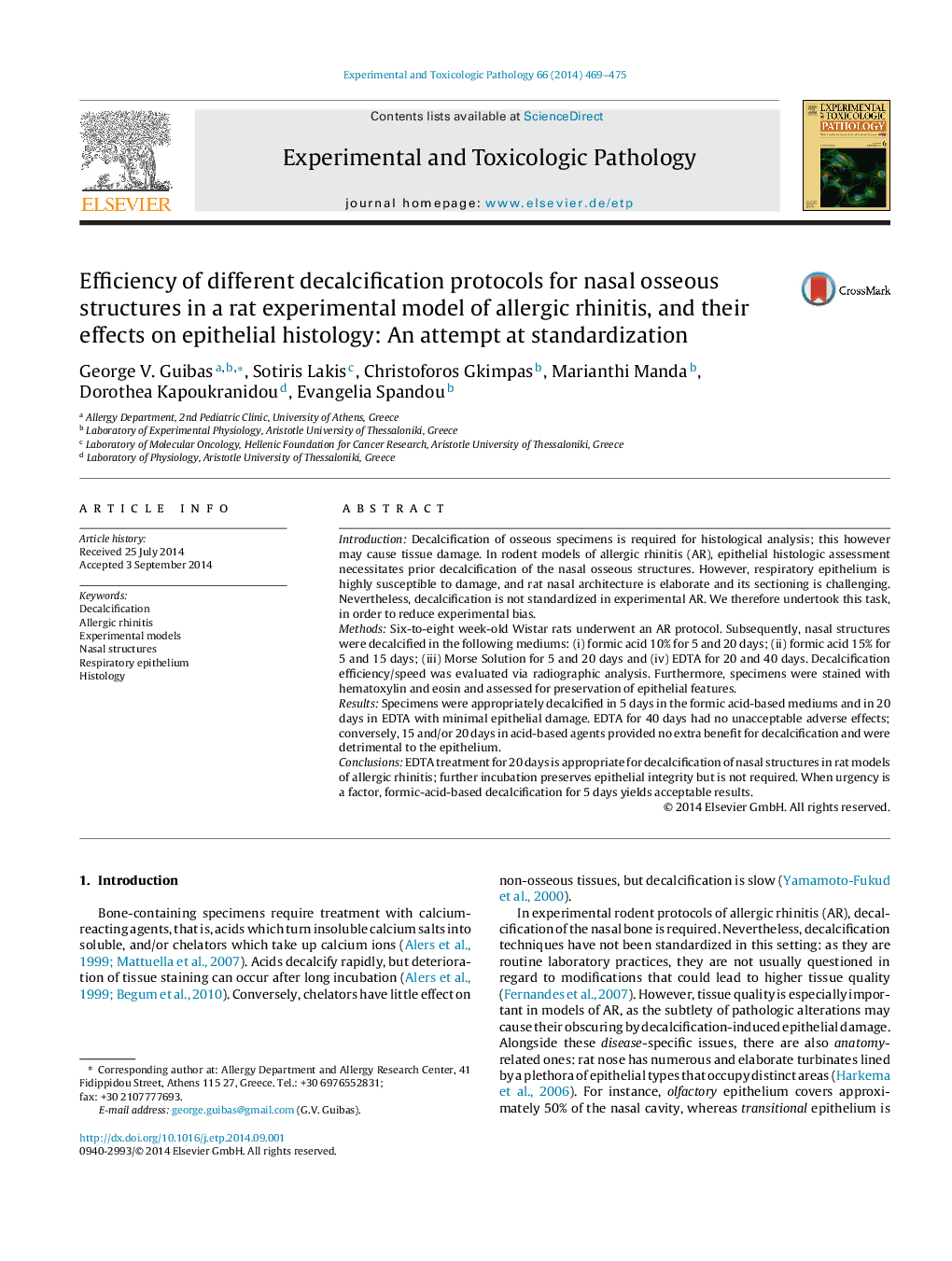| Article ID | Journal | Published Year | Pages | File Type |
|---|---|---|---|---|
| 2498874 | Experimental and Toxicologic Pathology | 2014 | 7 Pages |
IntroductionDecalcification of osseous specimens is required for histological analysis; this however may cause tissue damage. In rodent models of allergic rhinitis (AR), epithelial histologic assessment necessitates prior decalcification of the nasal osseous structures. However, respiratory epithelium is highly susceptible to damage, and rat nasal architecture is elaborate and its sectioning is challenging. Nevertheless, decalcification is not standardized in experimental AR. We therefore undertook this task, in order to reduce experimental bias.MethodsSix-to-eight week-old Wistar rats underwent an AR protocol. Subsequently, nasal structures were decalcified in the following mediums: (i) formic acid 10% for 5 and 20 days; (ii) formic acid 15% for 5 and 15 days; (iii) Morse Solution for 5 and 20 days and (iv) EDTA for 20 and 40 days. Decalcification efficiency/speed was evaluated via radiographic analysis. Furthermore, specimens were stained with hematoxylin and eosin and assessed for preservation of epithelial features.ResultsSpecimens were appropriately decalcified in 5 days in the formic acid-based mediums and in 20 days in EDTA with minimal epithelial damage. EDTA for 40 days had no unacceptable adverse effects; conversely, 15 and/or 20 days in acid-based agents provided no extra benefit for decalcification and were detrimental to the epithelium.ConclusionsEDTA treatment for 20 days is appropriate for decalcification of nasal structures in rat models of allergic rhinitis; further incubation preserves epithelial integrity but is not required. When urgency is a factor, formic-acid-based decalcification for 5 days yields acceptable results.
